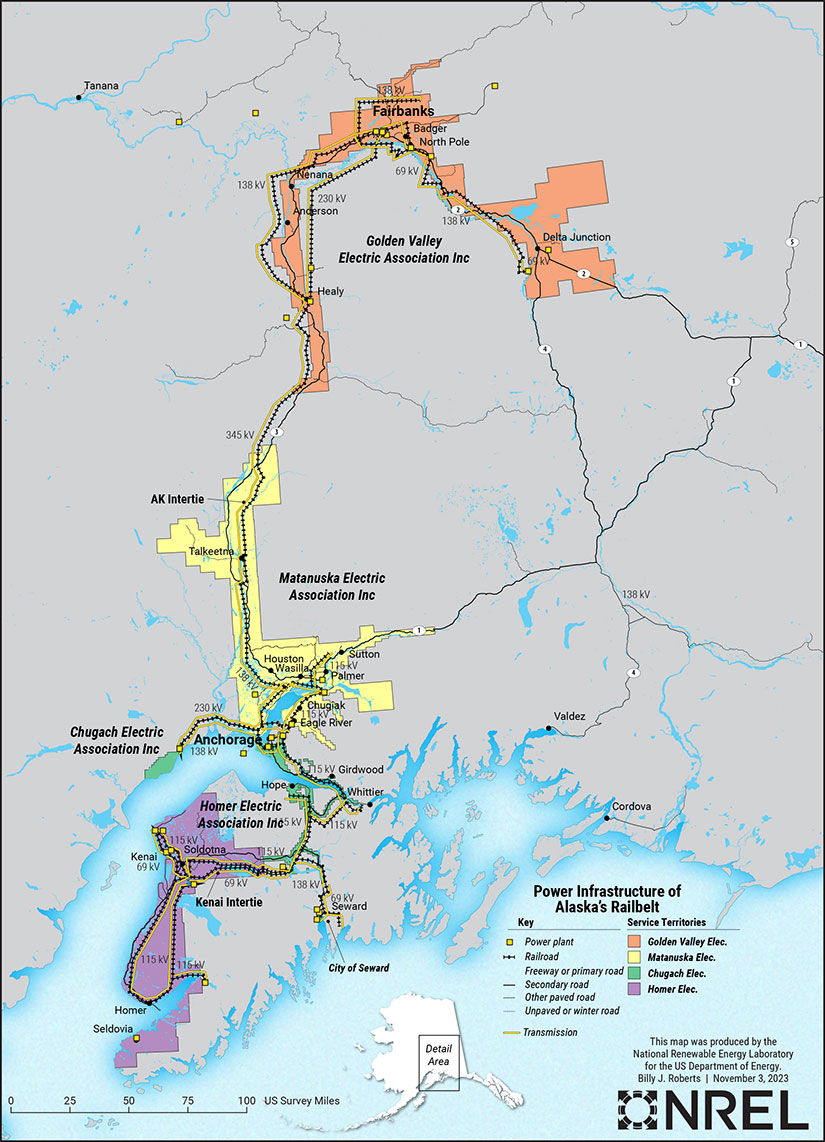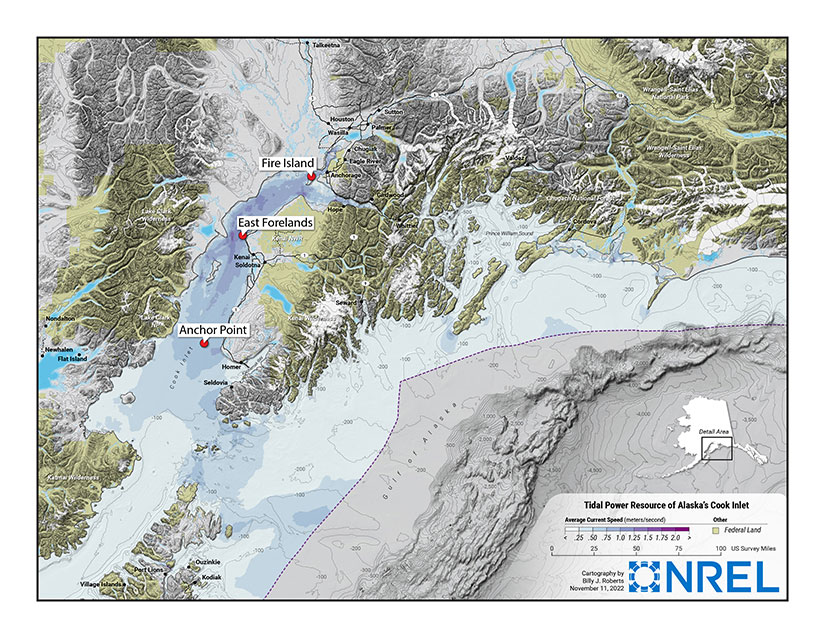Sign up for daily news updates from CleanTechnica on email. Or follow us on Google News!
Much of Alaska is empty—of humans, at least. Vast tundra and forest separate cities and villages, dividing the state into more than 150 isolated power grids. The largest of these grids, known as the Railbelt, carries 70% of the state’s electrical energy to about three-quarters of its population. Today, that grid runs mostly on natural gas.
But Alaska’s Governor, Mike Dunleavy, wants to change that.
“Despite Alaska’s position as a leading producer of energy, the cost of energy in Alaska, especially in our rural communities, is extremely high,” he said in a 2023 press release.
Dunleavy wants 80% of the Railbelt’s electricity to come from renewable energy sources by 2040—not just to achieve the state’s clean energy goals but also to lower its higher-than-average energy costs. Switching to renewables, including hydroelectric, wind, solar, geothermal, and tidal power, could reduce how much the state spends on electricity generation by about $100 million per year (starting around 2030).
Cumulatively, those savings could total $1.3 billion, according to a new National Renewable Energy Laboratory (NREL) study.
The new NREL study, funded by the U.S. Department of Energy’s (DOE’s) Water Power Technologies Office, examines just how much value the new but fast-growing tidal energy industry could bring to the Railbelt grid. The state’s Cook Inlet, which flows right up to the center of the Railbelt in Anchorage, contains some of the largest tidal energy resources of any region on Earth (including about one-third of the United States’ total tidal power). But because tidal energy is still relatively new, its potential value is not always fully understood.
Working closely with Homer Electric Association, the utility serving the portion of the Railbelt grid that borders the Cook Inlet, the NREL team developed a grid operations model. With that model, they discovered that not only could tidal energy play a valuable role in decarbonizing Alaska’s biggest grid, but it could also boost the state’s economy.

“The existing Railbelt grid can support 200 megawatts (MW) of tidal energy, and with planned grid upgrades, it could support up to 300 MW,” said Marty Schwarz, a power systems modeler at NREL and an author on the study. Those 200 MW could power about half the homes in Anchorage, Alaska’s largest city; 300 MW could power almost all 118,000 homes.
But that is not all. “There’s also potential to generate green fuels, like hydrogen, to export to other states or overseas,” Schwarz said.
Cook Inlet’s tides carry far more than 300 MW of energy. But even if the Railbelt’s current transmission system can only support a portion of that power, that does not mean all that energy has to go to waste. The excess could power the production of clean fuel sources like hydrogen or ammonia.
“Tidal energy could help make Alaska a leading exporter of renewable energy,” Schwarz said.
Of course, some of that tidal energy could stay within the state, helping decarbonize the Railbelt power system. Because tidal energy is so consistent and predictable, it makes a reliable complement to variable renewable energy sources like solar and wind energy. Because of that, tidal energy could provide a stable foundation for the Railbelt’s transition and could, the team found, help reduce the grid’s carbon emissions by up to 37%.
To get to their estimates, the team designed the grid operations model to combine theoretical and real-world data—including, for example, the amount of tidal energy theoretically available in each hour of the year 2035, as well as how much of that energy the Railbelt grid could handle.
“Our models are aligned with what the grid operators are seeing. They’re as real as they can get,” said Ben McGilton, a research engineer at NREL and another author on the study.

Of course, the team’s calculations assume tidal energy technologies will achieve commercial success by 2035, which is possible but not guaranteed. They also do not include the technical costs of developing these technologies. Nor do they consider regulatory and other challenges that arise when working with multiple utilities to coordinate large-scale renewable energy projects.
If, however, tidal energy technologies do make it to market, tidal energy could meet about 14% of the total Railbelt electrical demand in 2035, McGilton said. That percentage could increase to 20% if Alaska upgrades its transmission system. The existing Kenai Intertie, the only transmission line that connects the Kenai Peninsula and Homer to the rest of the Railbelt system, can only transfer about 75 MW of electricity as of today.
The Alaskan government is already discussing how to make these transmission upgrades. In the meantime, the NREL team will continue to examine the value of other marine energy resources—like ocean current energy in Florida and wave energy in Hawaii. All this data will help researchers, as well as local governments and utilities, quantify how this budding renewable resource could support their clean energy transitions.
“There’s a lot to learn about marine energy technologies over the coming decades,” said Levi Kilcher, a senior energy advisor for DOE’s Arctic Energy Office and another author on the study. “But if we can figure out how to create these technologies at low cost, it could really be a huge benefit to communities throughout Alaska and other parts of the world as well.”
Learn more about NREL’s efforts to help bring tidal energy to Alaska’s Cook Inlet. And subscribe to the NREL water power newsletter, The Current, to make sure you do not miss a water power update.
By Caitlin McDermott-Murphy, NREL.
Have a tip for CleanTechnica? Want to advertise? Want to suggest a guest for our CleanTech Talk podcast? Contact us here.
Latest CleanTechnica.TV Video
CleanTechnica uses affiliate links. See our policy here.





